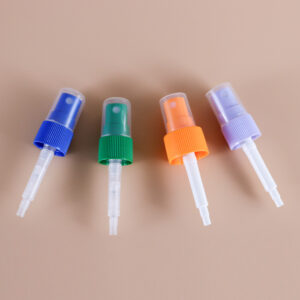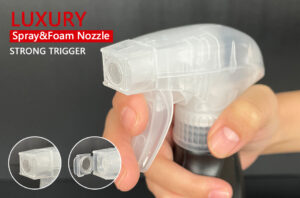A pamu vai fitted on a bottle normally lasts three months, but a faulty pump will begin to jam, leak, or even introduce spring rust into the cream after three weeks. Before placing an order without any equipment, check the following five tips at the exhibition, warehouse, or live broadcast room.



1.Look – “First impression” eliminates 50% of defective products
- Head cap: The head cap has no burrs and no stress whitening
- Screw thread: Screw the pump into a regular 24/410 bottle opening. When it is screwed in 1.5 turns, it should go to the bottom smoothly and without sticking.
- tautotogo: External springs work better. The spring is totally insulated from the liquid to prevent contamination.
2.Pressure – one stroke to know the service life
- The complete stroke is around 6 mm. After releasing your hand, the pump head should be completely reset within 1 second. If the reset is slow or stuck, this indicates that the internal piston or valve plate has been distorted.
- The hand feel curve should be smooth after pressing ten times continuously. If it becomes much heavier after the third or fourth use, there is a problem with the sealing ring. The seal is not good, and it will leak if used for a long time.
3.Drops – “Standstill for 3 minute” leak test
- After you press to release the liquid, do not use it again. Let the nozzle point down for 3 minute.
- Good pump: 0 drops of leakage;
- bad pump: beads appear within 1 minute and droplets form within 3 minute.
4.Return – “vacuum back suction” to prevent dripping
- When the pump head is withdrawn, there should be a tiny back-sucking movement at the nozzle to recover any remaining liquid.
- No or too much backsucking happens when the valve plate opens and closes unevenly. This causes “tail hanging” during the next spray.
5.Listening – Sound can also be used to judge
- Normal pump: only a gentle “pop” sound;
- The pump is poor. It makes a “squeaking” sound from plastic friction. This means the piston and pump chamber are too tight. Over time, this can cause plastic chips to form.
A “good” Lotion Pump must meet the following requirements:
- External spring or all-plastic spring (spring corrosion-resistant)
- ≤1 s reset
- 3 min no dripping
- One inversion to prime
Take these five tips with you, and you’ll never have to dissect another pump. You will also be able to select a high-quality lotion pump that can be used over 30,000 times at once.






